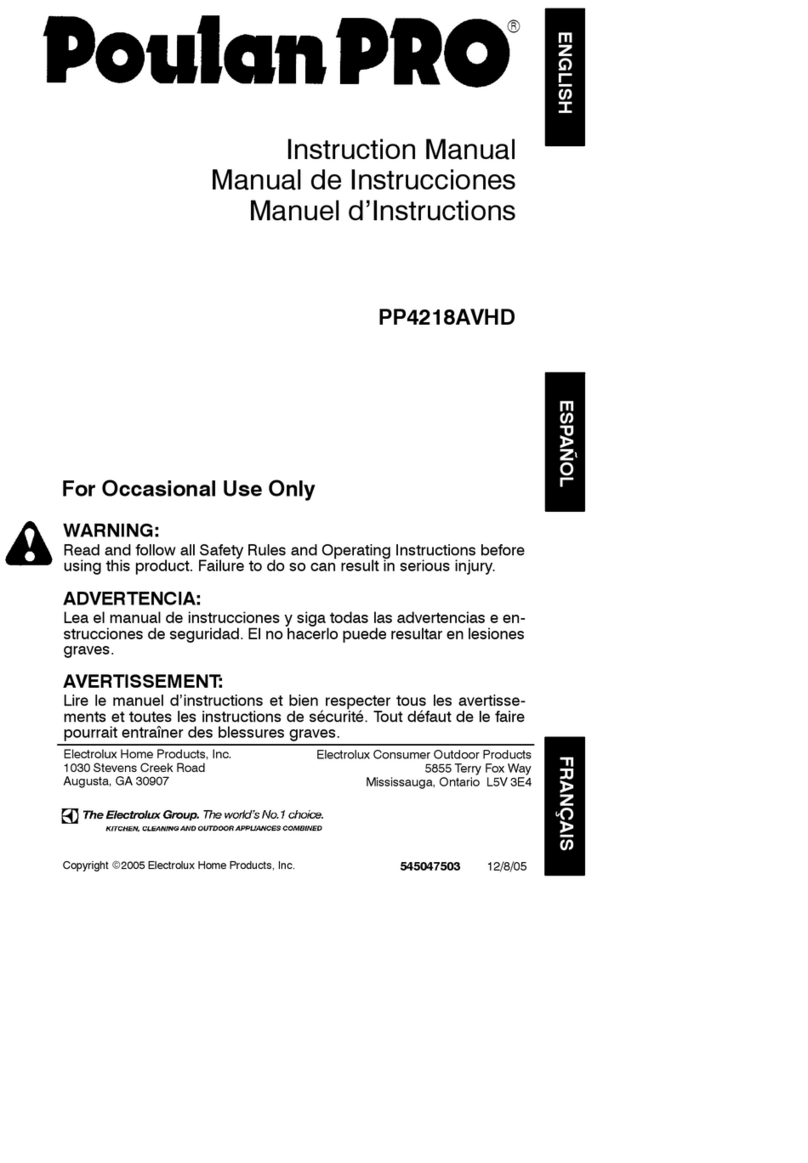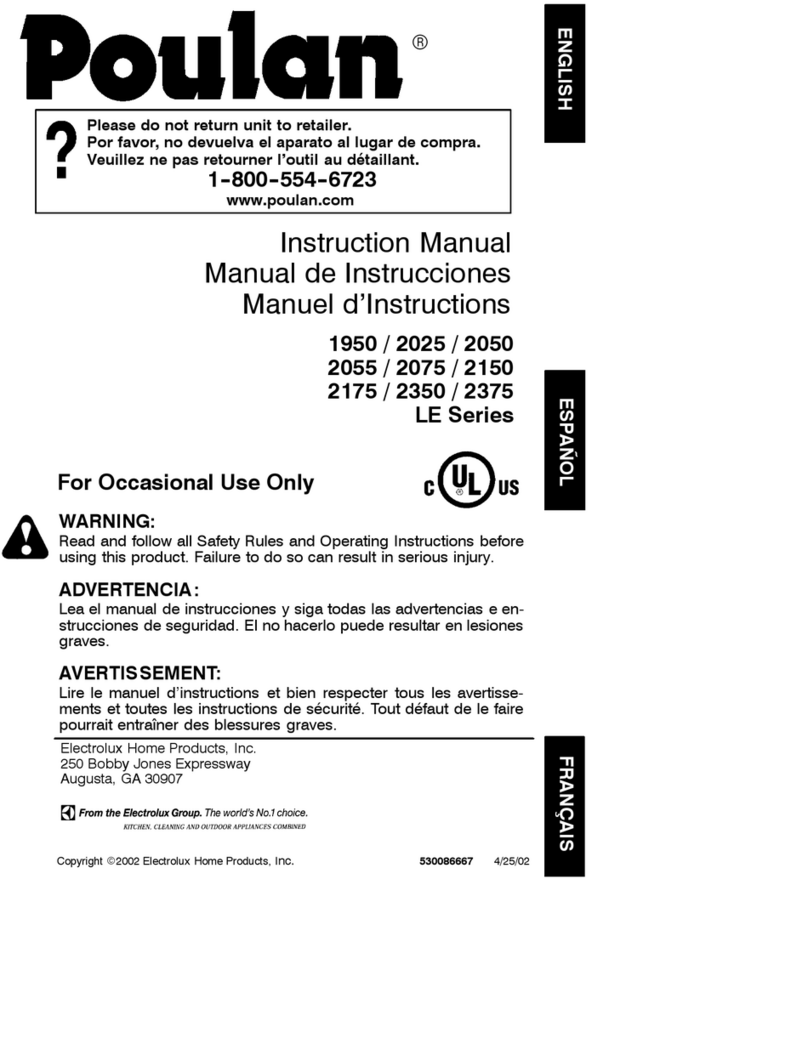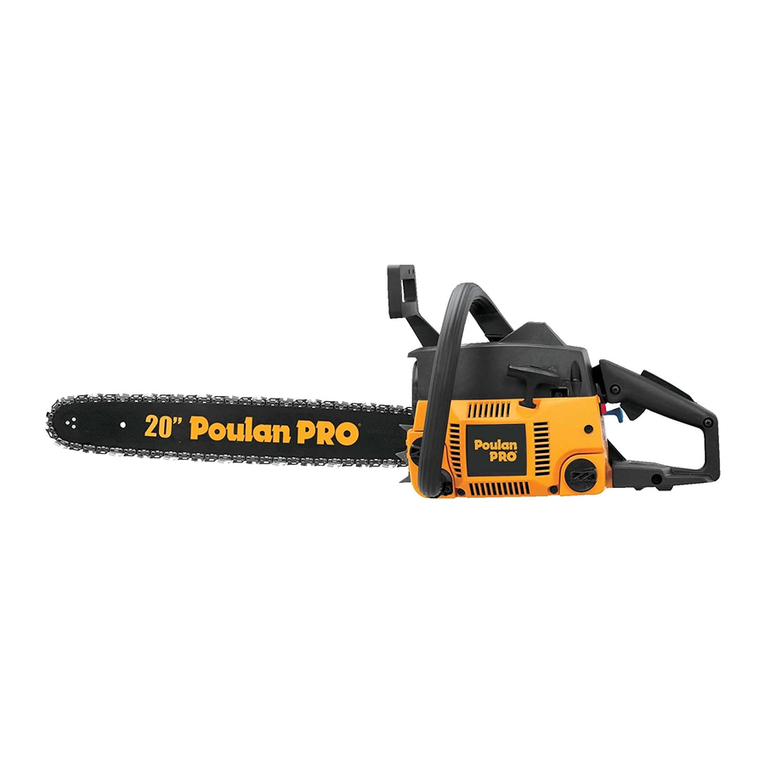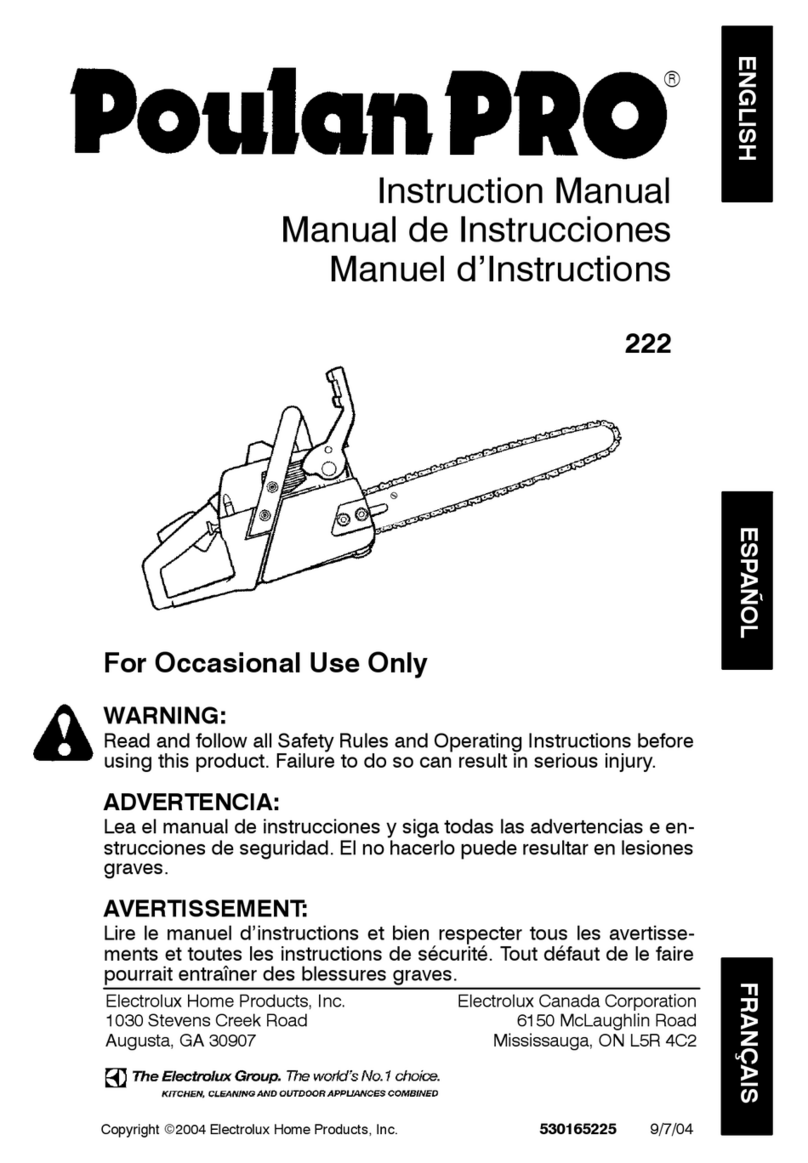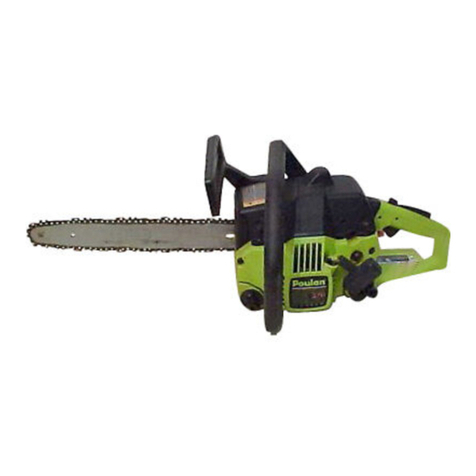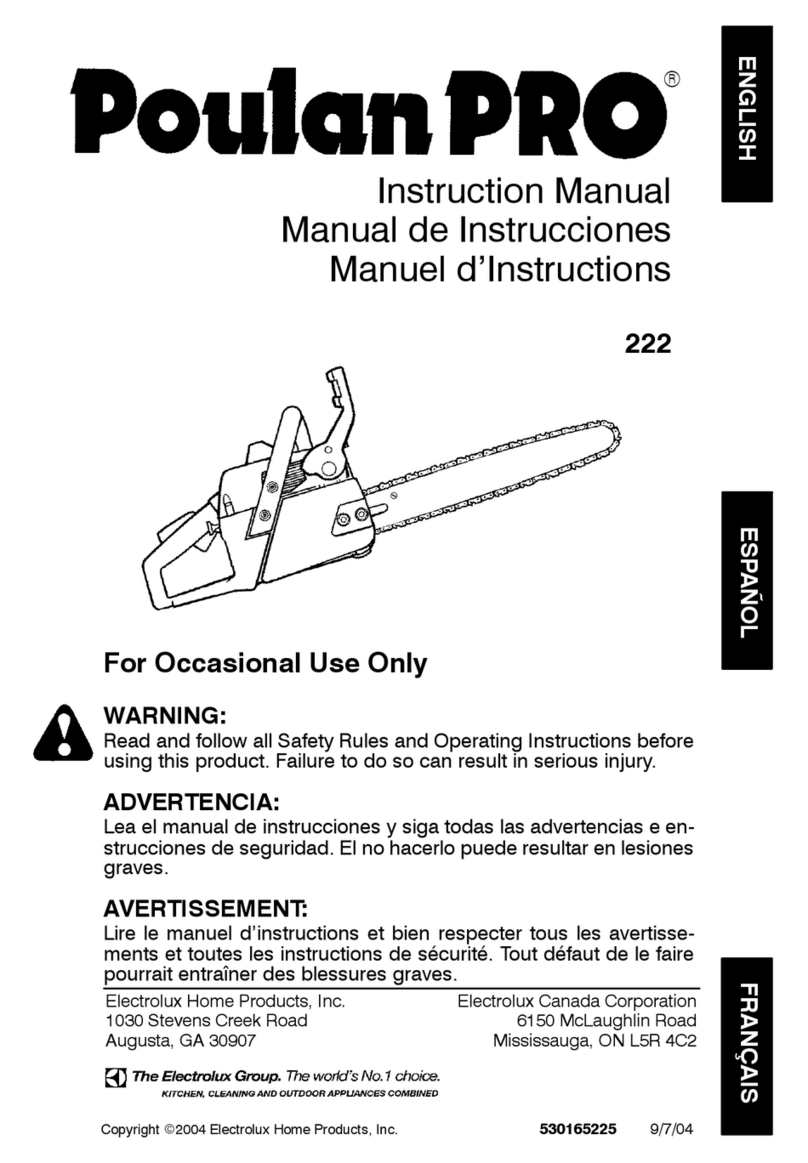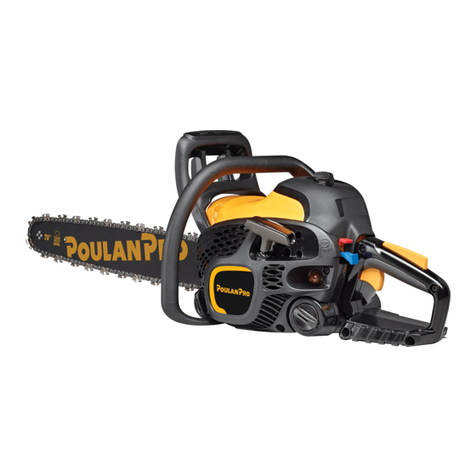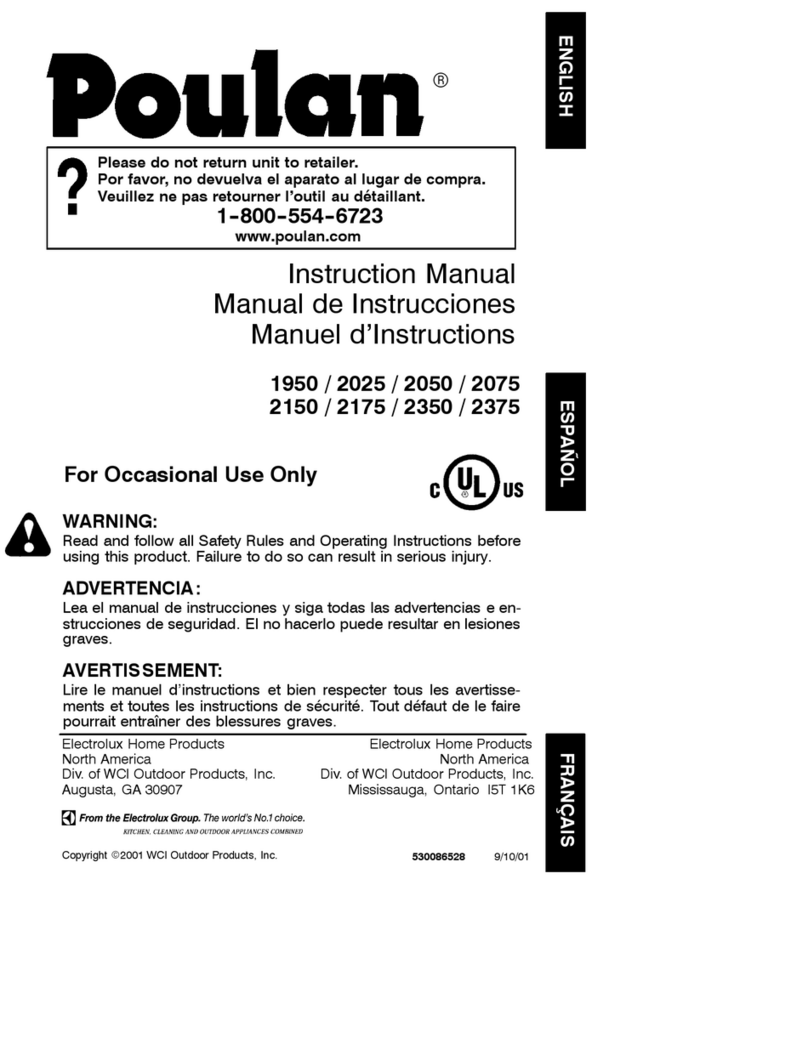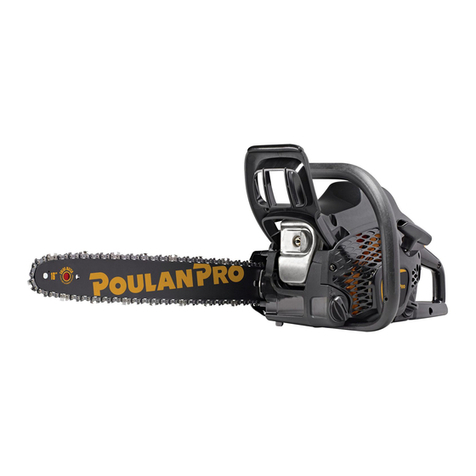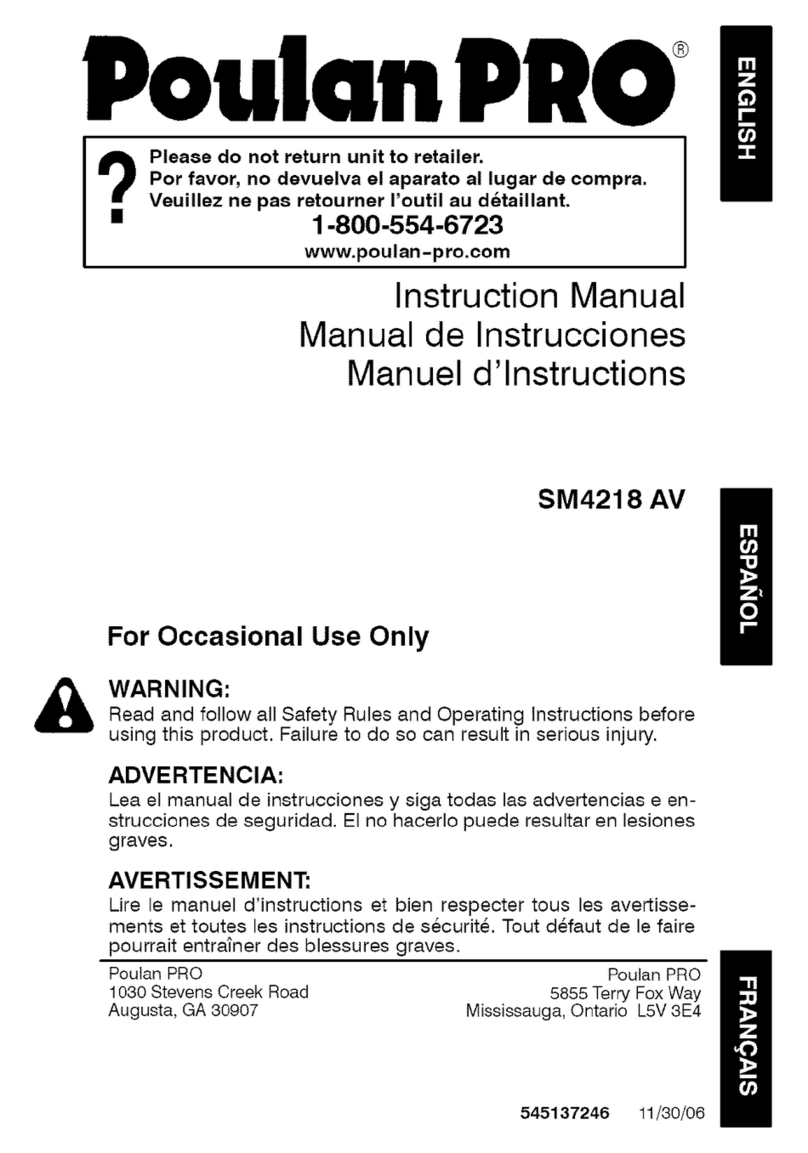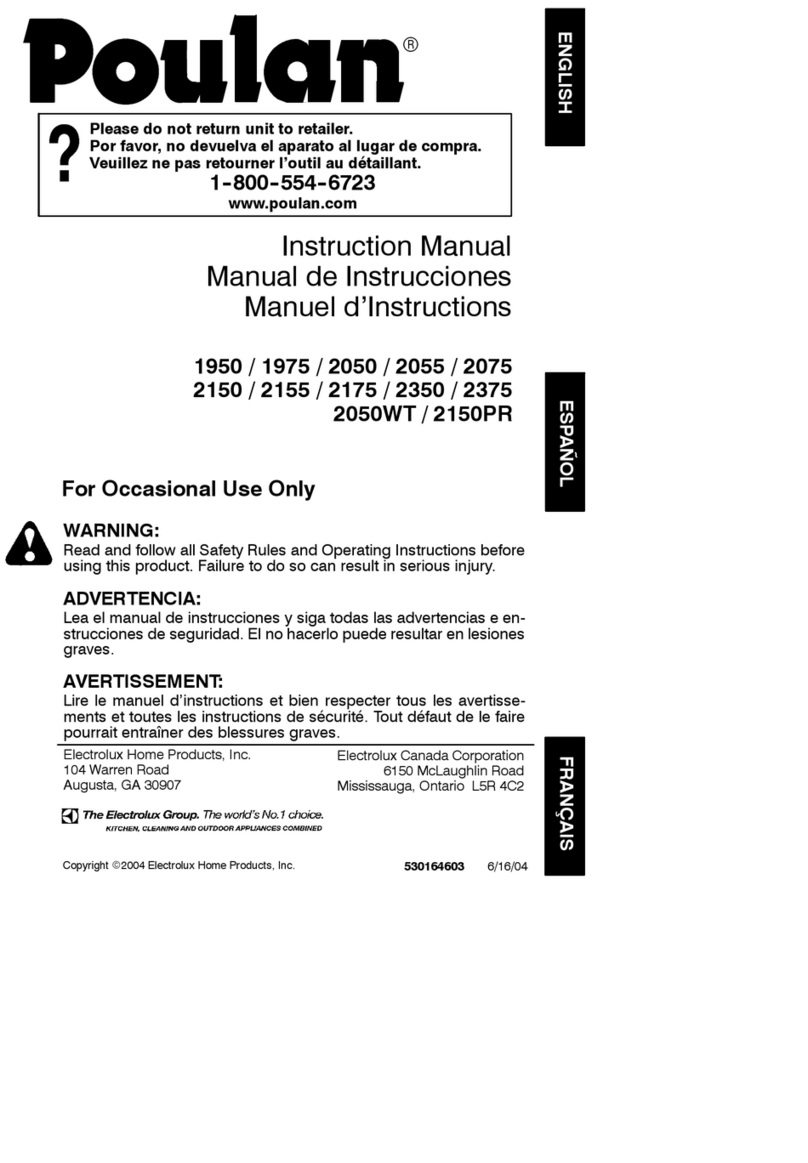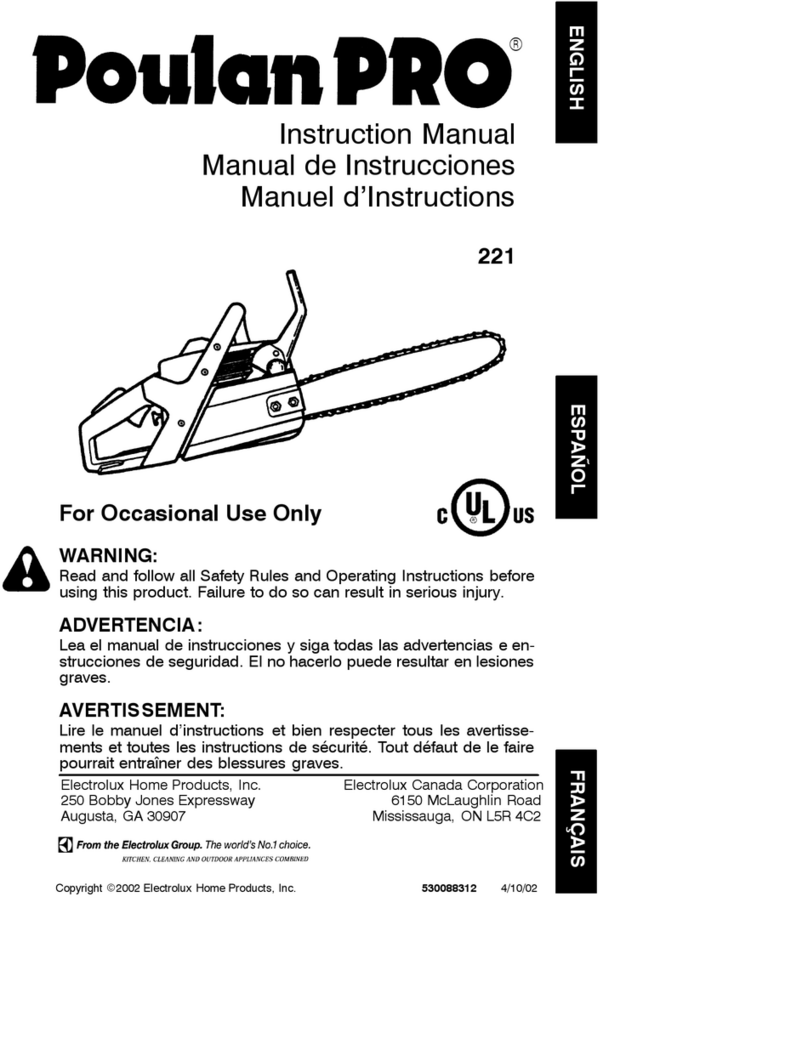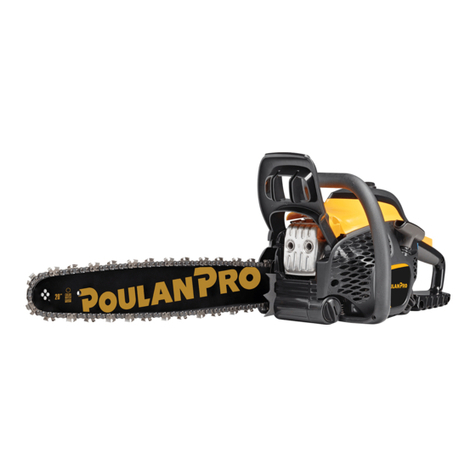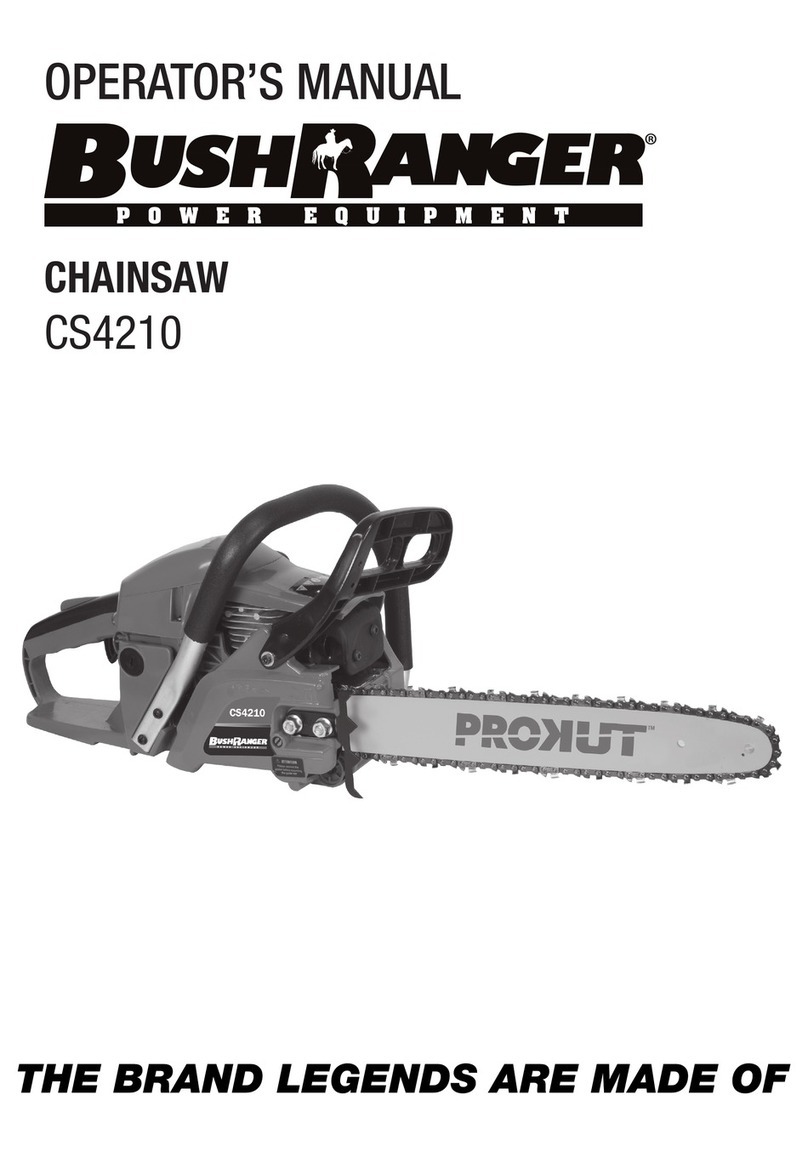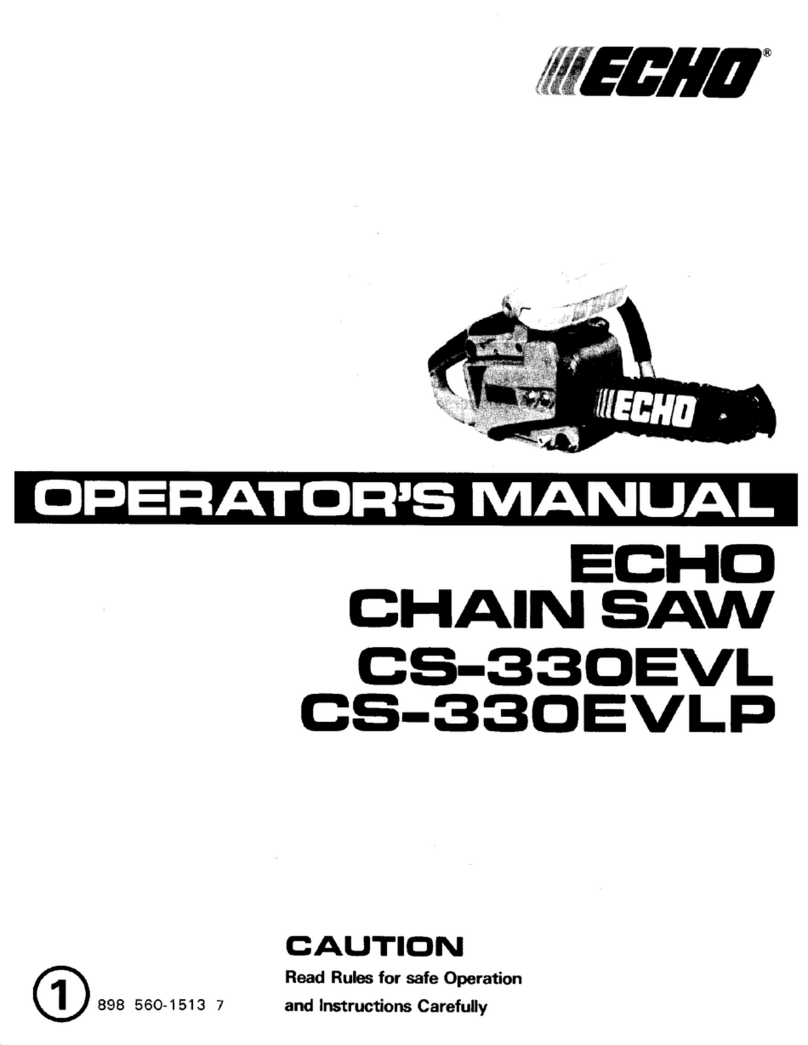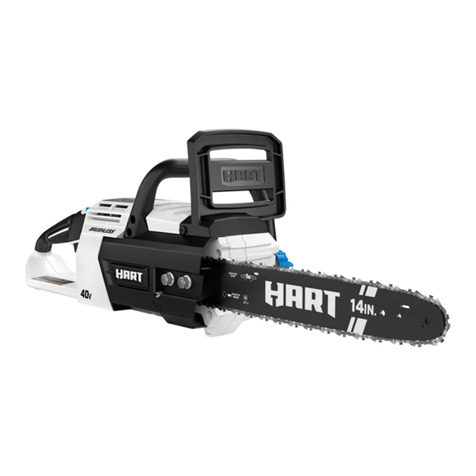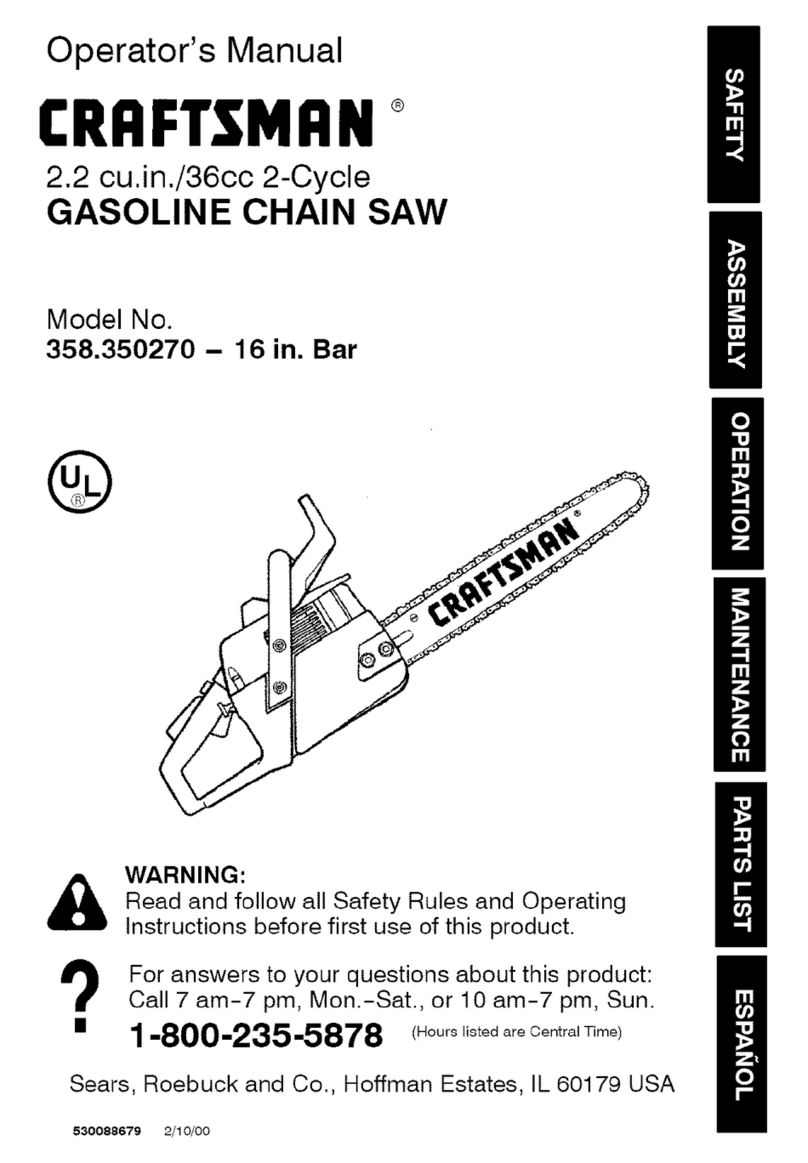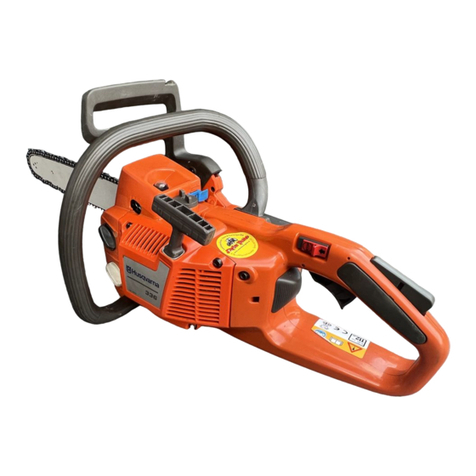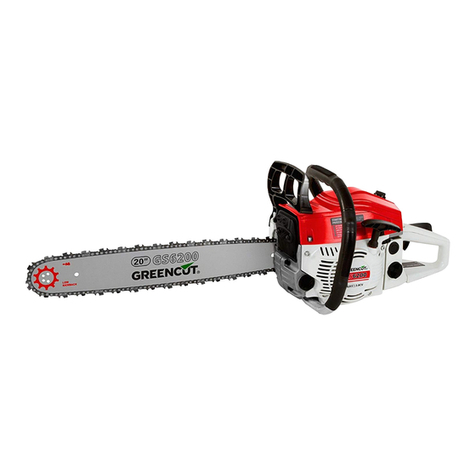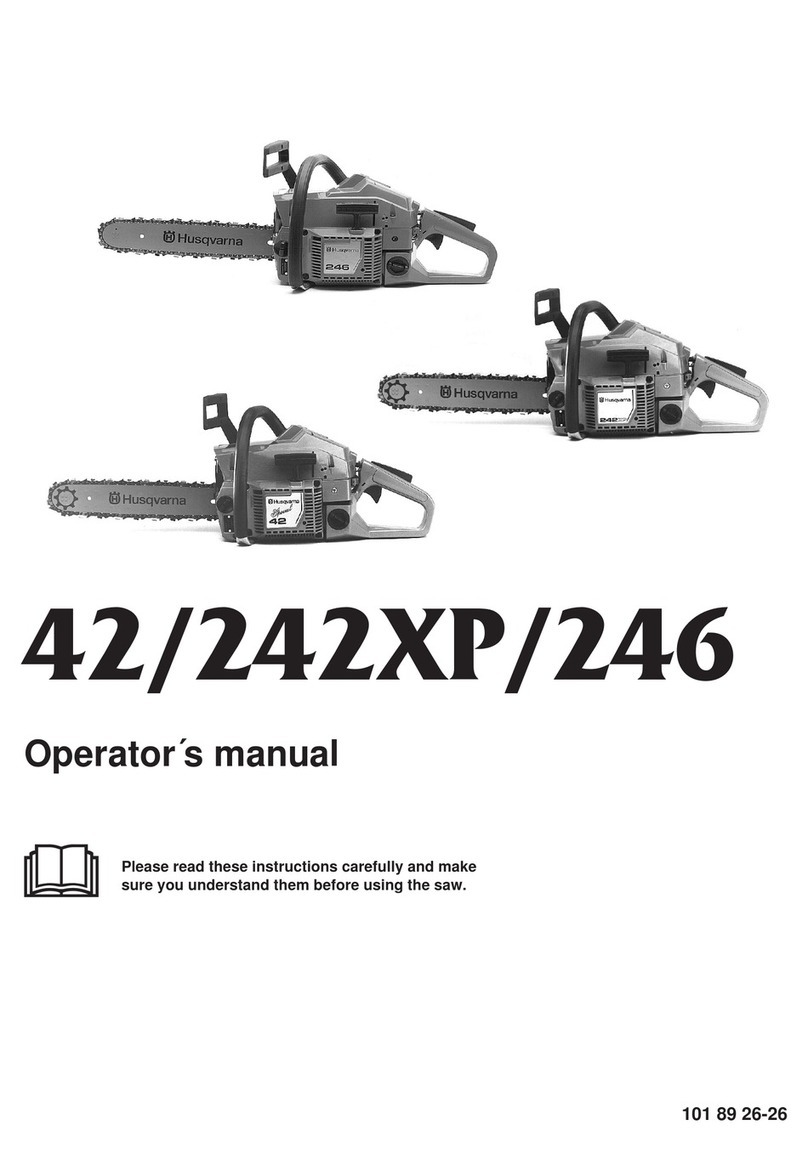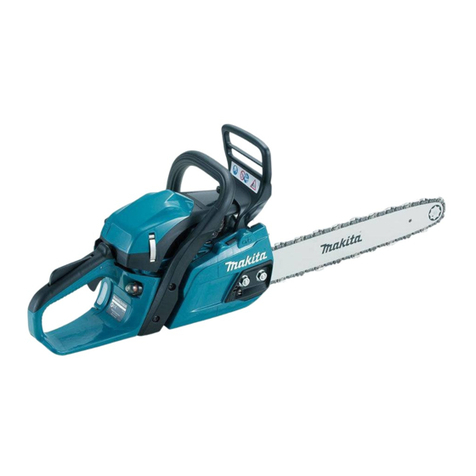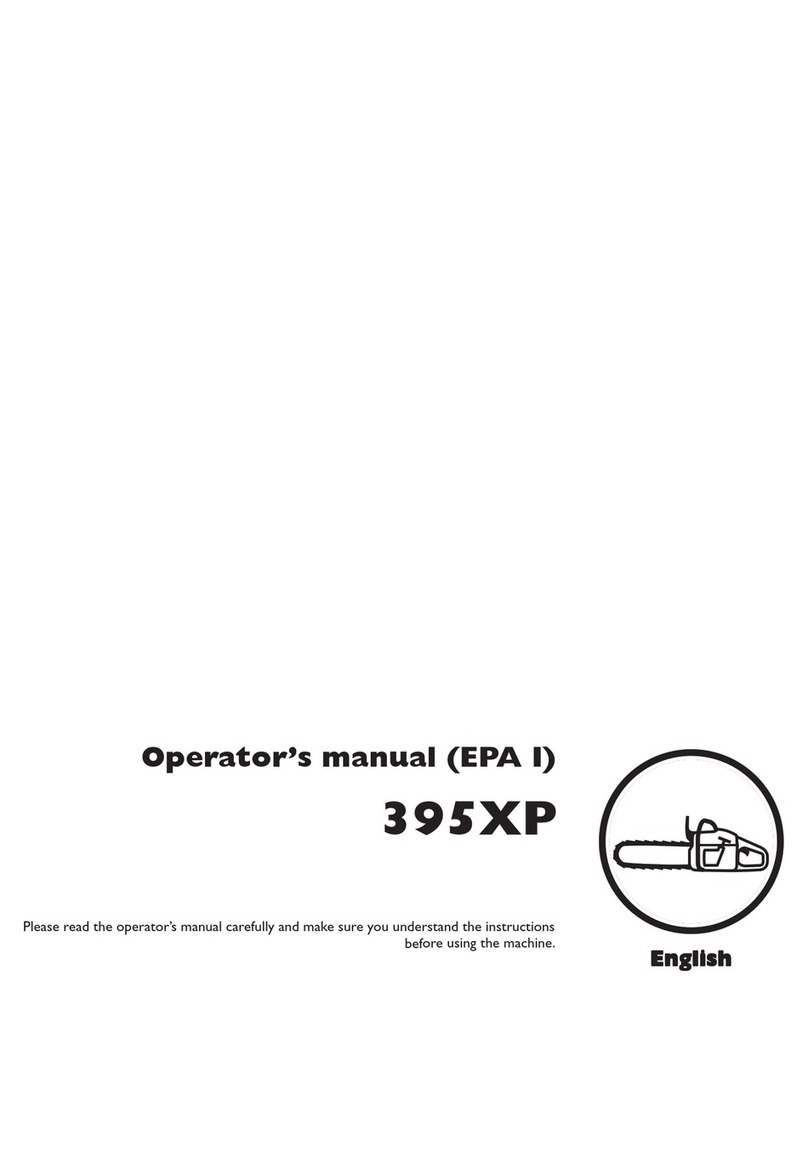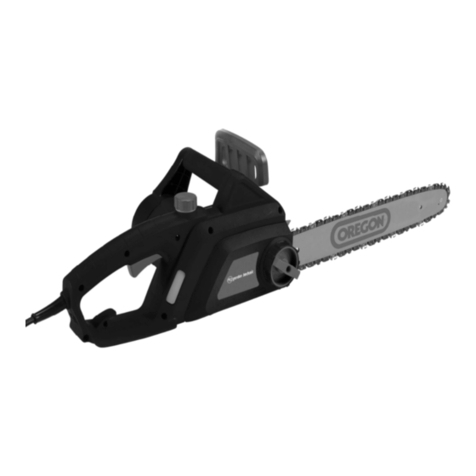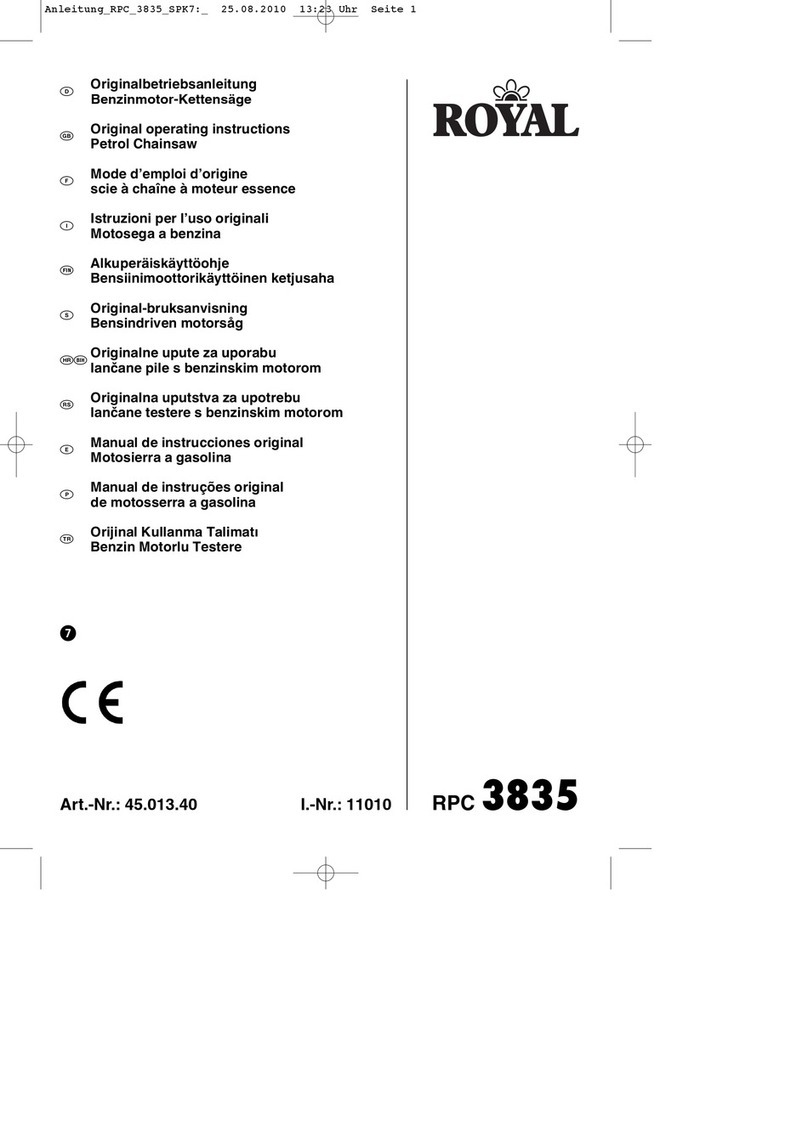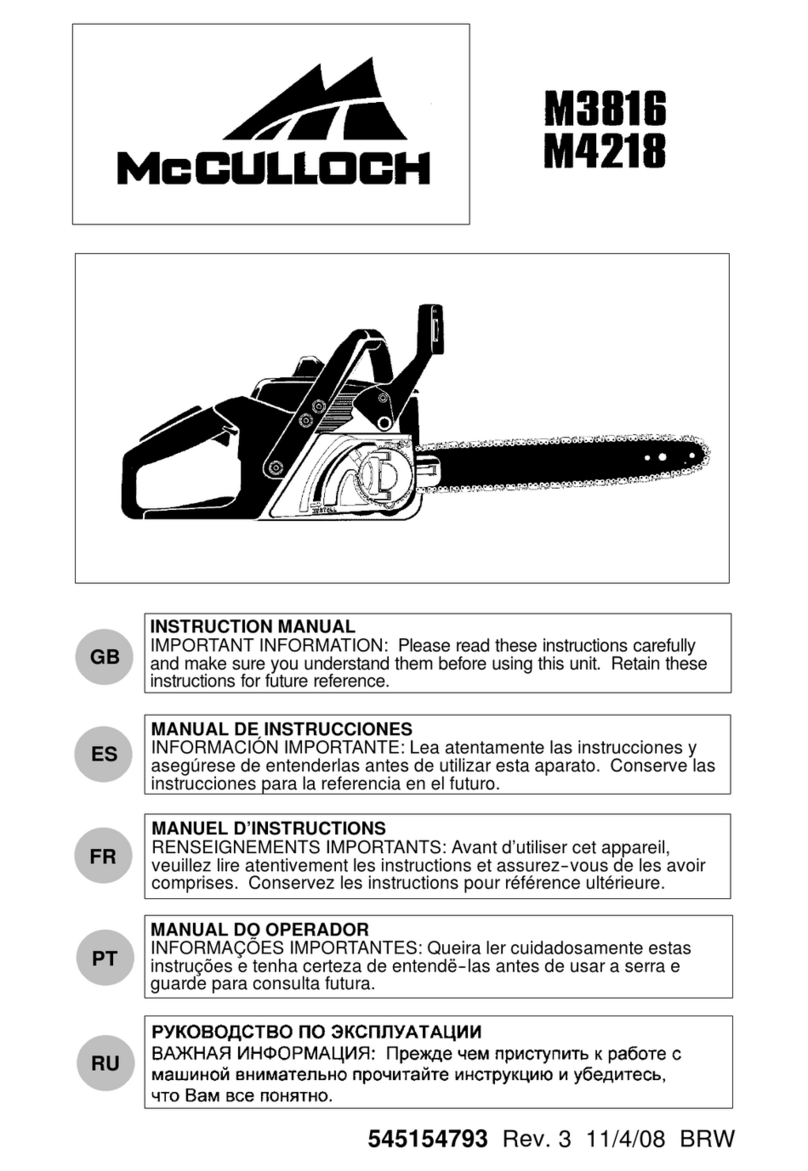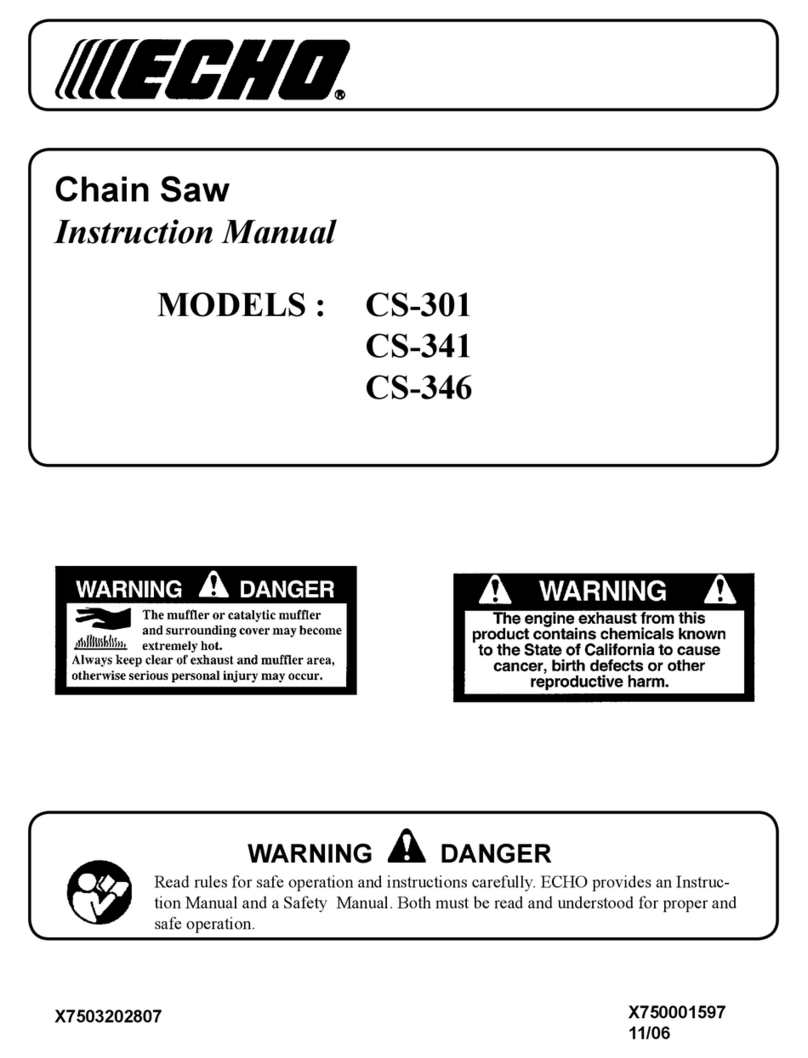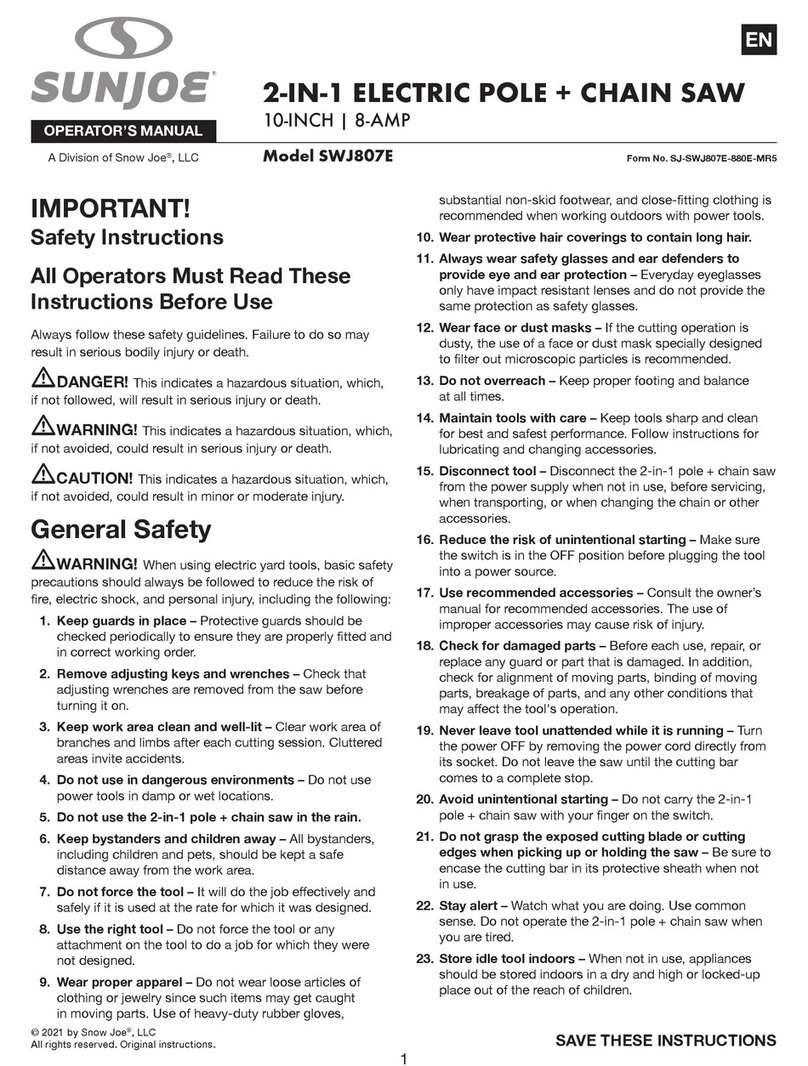4
SMove at least 10 feet (3 meters) from fuel-
ing site before starting engine.
STurn the engine off and let saw cool in a
non-combustible area, not on dry leaves,
straw, a er, etc. Slowly remove fuel ca
and refuel unit.
SStore the unit and fuel in an area where fuel
va ors cannot reach s arks or o en
flames from water heaters, electric motors
or switches, furnaces, etc.
KICKBACK
WARNING:
Avoid kickback which
can result in serious injury. Kickback is the
backward, u ward or sudden forward motion
of the guide bar occurring when the saw chain
near the u er ti of the guide bar contacts any
object such as a log or branch, or when the
wood closes in and inches the saw chain in
the cut. Contacting a foreign object in the wood
can also result in loss of chain saw control.
S
Rotational Kickback can occur when the
moving chain contacts an object at the u er
ti of the guide bar. This contact can cause
the chain to dig into the object, which sto s
the chain for an instant. The result is a light-
ning fast, reverse reaction which kicks the
guide bar u and back toward the o erator.
S
Pinch-Kickback can occur when the the
wood closes in and inches the moving saw
chain in the cut along the to of the guide bar
and the saw chain is suddenly sto ed. This
sudden sto ing of the chain results in a re-
versal of the chain force used to cut wood
and causes the saw to move in the o osite
direction of the chain rotation. The saw is
driven straight back toward the o erator.
S
Pull-In can occur when the moving chain
contacts a foreign object in the wood in the
cut along the bottom of the guide bar and the
saw chain is suddenly sto ed. This sudden
sto ing ulls the saw forward and away
from the o erator and could easily cause the
o erator to lose control of the saw.
Avoid Pinch- Kickback:
SBe extremely aware of situations or ob-
structions that can cause material to inch
the to of or otherwise sto the chain.
SDo not cut more than one log at a time.
SDo not twist the saw as the bar is with-
drawn from an undercut when bucking.
Avoid Pull- In:
SAlways begin cutting with the engine at full
s eed and the saw housing against wood.
SUse wedges made of lastic or wood.
Never use metal to hold the cut o en.
Kickback Path
Clear The
Working Area
Avoid Obstructions
REDUCE THE CHANCE OF
KICKBACK
SRecognize that kickback can ha en.
With a basic understanding of kickback,
you can reduce the element of sur rise
which contributes to accidents.
SNever let the moving chain contact any ob-
ject at the ti of the guide bar.
SKee the working area free from obstruc-
tions such as other trees, branches, rocks,
fences, stum s, etc. Eliminate or avoid
any obstruction that your saw chain could
hit while you are cutting. When cutting a
branch, do not let the guide bar contact
branch or other objects around it.
SKee your saw chain shar and ro erly
tensioned. A loose or dull chain can in-
crease the chance of kickback occurring.
Follow manufacturer’s chain shar ening
and maintenance instructions. Check ten-
sion at regular intervals with the engine
sto ed, never with the engine running.
Make sure the bar nuts are securely tight-
ened after tensioning the chain.
SBegin and continue cutting at full s eed. If
the chain is moving at a slower s eed,
there is greater chance of kickback occur-
ring.
SCut one log at a time.
SUse extreme caution when re-entering a
revious cut.
SDo not attem t cuts starting with the ti of
the bar ( lunge cuts).
SWatch for shifting logs or other forces that
could close a cut and inch or fall into chain.
SUse the Reduced- Kickback Guide Bar
and Low- Kickback Chain s ecified for
your saw.
MAINTAIN CONTROL
Never reverse
hand ositions
Stand to the
left of the saw
Thumb on
underside of
handlebar
Thumb on underside of
handlebar
Elbow locked
SKee a good, firm gri on the saw with both
hands when the engine is running and don’t
let go. A firm gri will hel you reduce kick-
back and maintain control of the saw. Kee
the fingers of your left hand encircling and





